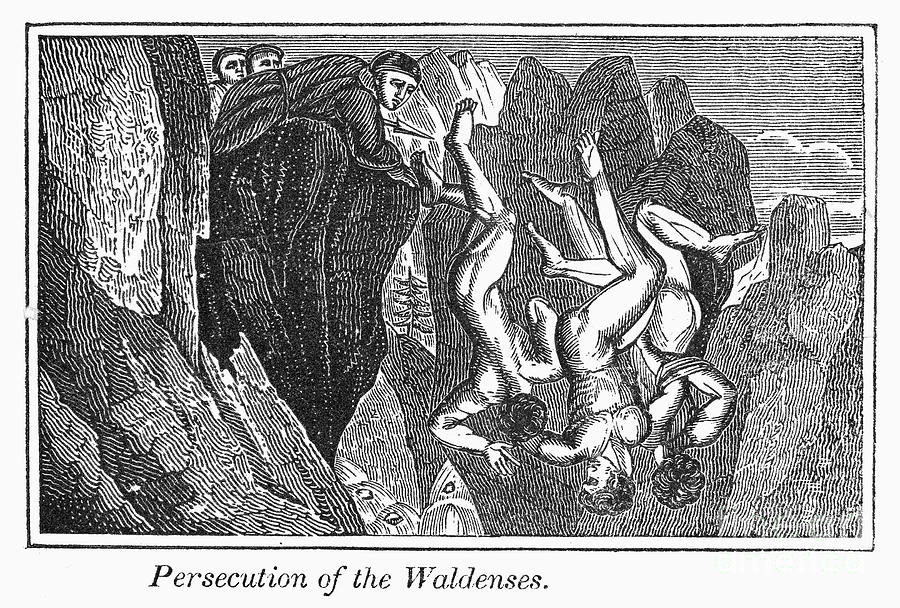Waldensian Courage, Waldensian Blood September 2, 2015
Author: Beach Combing | in : Medieval, Modern , trackbackIn a recent post Beach looked at the extraordinary survival of the Waldensians, a courageous proto-Protestant sect, which managed to weather the full rage of the Church in the Alps between France and Italy. The history of the Waldensians is a long catalogue of courage and atrocity: the courage of the Waldensians and the violence of the ecclesiastical authorities, intermittently the Savoy (their secular lords), and local Catholic enthusiasts. The following is an all too typical passage from Mitchell’s The Waldenses, 1853. There is an element of Protestant hagiography here, the style is perhaps too elevated, the crescendo is practically pornographic, but reach beyond the words and you sense those Piedmont settlements, many like Bobbio small villages, which for generation stayed loyal to their faith. What Beach finds most difficult to understand is how agricultural communities found the intellectual authority to take on the Dominicans and the local Bishop and to then willingly die for their beliefs generation after generation. (Having a bad day? This doesn’t make for pleasant reading.)
[87-88] There is no town in Piedmont, under a Waldensian pastor, where some of the brethren have not been put to death. Jordan Terbano was burned alive at Suza; Hippolyte Kossiero at Turin; Michael Goneto, an octogenarian, at Sarcena; Yillermin Ambrosio hanged on the Col di Meano; Hugo Chiamps, of Fenestrelle, had his entrails torn from his living body, at Turin; Peter Geymarali, of Bobbio, in like manner, had his entrails taken out at Luserne, and a fierce cat thrust in their place to torture him further; Maria Romano was buried alive at Roccapatia; Magdalen Foulano underwent the same fate at San Giovanni; Susan Michelini was bound hand and foot, and left to perish of cold and hunger on the snow at Sarcena. Bartholomew Fache, gashed with sabres, had the wounds filled up with quick-lime, and perished thus in agony at Fenile; Daniel Michelini had his tongue torn out at Bobbio, for having praised God; James Baridari perished, covered with sulphureous matches, which had been forced into his flesh under the nails, between the fingers, in the nostrils, in the lips, and over all his body, and then lighted. Daniel Revelli had his mouth filled with gun-powder, which, being lighted, blew his head to pieces. Maria Monnen, taken at Liousa, had the flesh cut from her cheek and chin bones, so that her jaw was left bare, and she was thus left to perish. Paul Garnier was slowly sliced to pieces at Bora; Thomas Margueti was mutilated in an indescribable manner at Miraboco, and Susan Jaquin cut in bits at La Torre. Sara Rostagnol was slit open from the legs to the bosom, and left so to perish on the road between Eyral and Luzerna; Anne Charbonnier was impaled, and carried thus on a pike, as a standard, from San Giovanni to La Torre. Daniel Rambaud, at Paesano, had his nails torn off, then his fingers chopped off, then his feet and his hands, and then his arms and his legs, with each successive refusal on his part to abjure the gospel. In March, 1536, Martin Gonin, pastor of Angrogna, was seized on his return from Geneva, at Grenoble, and, after a mock trial, taken from his prison at night, and drowned in the Isere. In June, 1556, Barthelemi Hector, of Poitiers, was burned at Turin, for having sold copies of the Bible to the shepherds of the Alps.
Other catalogues of horror: drbeachcombing AT yahoo DOT com



